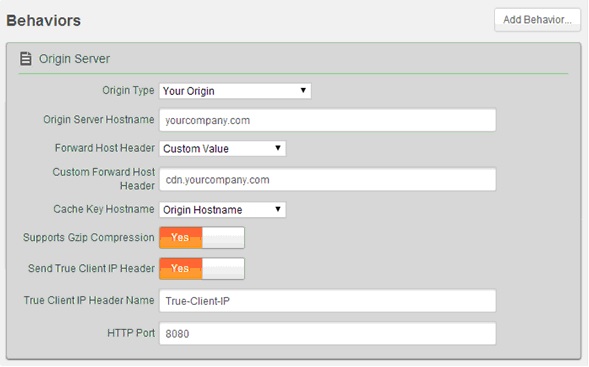Serving Direct Update requests from a CDN
improve this page | report issueOverview
You can configure Direct Update requests to be served from a CDN (content delivery network) instead of from the MobileFirst Server.
Advantages of using a CDN
Using a CDN instead of the MobileFirst Server to serve Direct Update requests has the following advantages:
- Removes network overheads from the MobileFirst Server.
- Increases transfer rates higher than the 250 MB/second limit when serving requests from a MobileFirst Server.
- Ensures a more uniform Direct Update experience for all users regardless of their geographical location.
General requirements
To serve Direct Update requests from a CDN, ensure that your configuration conforms to the following conditions:
- The CDN must be a reverse proxy in front of the MobileFirst Server (or in front of another reverse proxy if needed).
- When building the application from your development environment, set up your target server to the CDN host and port instead of the host and port of the MobileFirst Server. For example, when running the MobileFirst CLI command mfpdev server add, provide the CDN host and port.
- In the CDN administration panel, you need to mark the following Direct Update URLs for caching to ensure that the CDN passes all requests to the MobileFirst Server except for the Direct Update requests. For Direct Update requests, the CDN determines whether it obtained the content. If it has, it returns it without going to the MobileFirst Server; if not, it goes to the MobileFirst Server, gets the Direct Update archive (.zip file), and stores it for the next requests for that specific URL. For applications that are built with v8.0 of IBM Mobile Foundation, the Direct Update URL is:
PROTOCOL://DOMAIN:PORT/CONTEXT_PATH/api/directupdate/VERSION/CHECKSUM/TYPE. ThePROTOCOL://DOMAIN:PORT/CONTEXT_PATHprefix is constant for all runtime requests. For example: http://my.cdn.com:9080/mfp/api/directupdate/0.0.1/742914155/full?appId=com.ibm.DirectUpdateTestApp&clientPlatform=android
In the example, there are additional request parameters that are also part of the request.
- The CDN must allow caching of the request parameters. Two different Direct Update archives might differ only by the request parameters.
- The CDN must support TTL on the Direct Update response. The support is needed to support multiple direct updates for the same version.
- The CDN must not change or remove the HTTP headers that are used in the server-client protocol.
Example configuration
This example is based on using an Akamai CDN configuration that caches the Direct Update archive. The following tasks are completed by the network administrator, the MobileFirst administrator, and the Akamai administrator:
Network administrator
Create another domain in the DNS for your MobileFirst Server. For example, if your server domain is yourcompany.com you need to create an additional domain such as cdn.yourcompany.com.
In the DNS for the new cdn.yourcompany.com domain, set a CNAME to the domain name that is provided by Akamai. For example, yourcompany.com.akamai.net.
MobileFirst administrator
Set the new cdn.yourcompany.com domain as the MobileFirst Server URL for the MobileFirst applications. For example, for the Ant builder task, the property is: <property name="wl.server" value="http://cdn.yourcompany.com/${contextPath}/"/>.
Akamai administrator
-
Open the Akamai property manager and set the property host name to the value of the new domain.

-
On the Default Rule tab, configure the original MobileFirst Server host and port, and set the Custom Forward Host Header value to the newly created domain.

-
From the Caching Option list, select No Store.

-
From the Static Content configuration tab, configure the matching criteria according to the Direct Update URL of the application. For example, create a condition that states
If Path matches one of direct_update_URL.
-
Set values similar to the following values to configure the caching behavior to make cache the Direct Update URL and to set TTL.
Field Value Caching Option Cache Force Revaluation of Stale Objects Serve stale if unable to validate Max-Age 3 minutes 
-
Configure the cache key behavior to use all request parameters in the cache key (you must do so to cache different Direct Update archives for different applications or versions). For example, from the Behavior list, select
Include all parameters (preserve order from request).
Inclusive terminology note: The Mobile First Platform team is making changes to support the IBM® initiative to replace racially biased and other discriminatory language in our code and content with more inclusive language. While IBM values the use of inclusive language, terms that are outside of IBM's direct influence are sometimes required for the sake of maintaining user understanding. As other industry leaders join IBM in embracing the use of inclusive language, IBM will continue to update the documentation to reflect those changes.